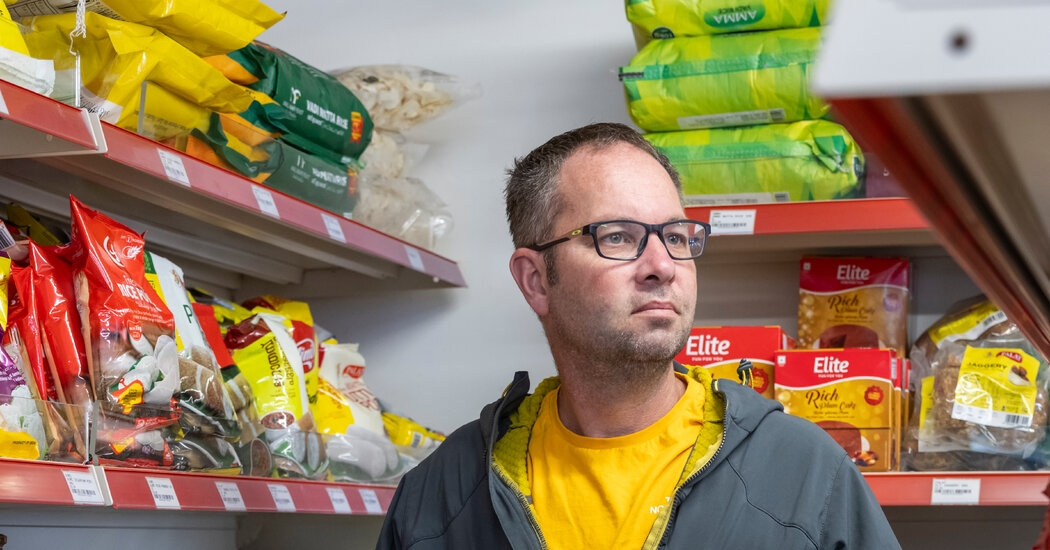On an interrail trip across Europe in 1989, years before you could buy Cool Ranch Doritos in Copenhagen or Oreos in Amsterdam, supermarkets and convenience stores in eight countries were comforting for two 19-year-olds from Los Angeles.
I know because I was one of them. The stores had a certain familiarity, with the same harsh lighting and aisles of breakfast cereal and laundry detergent found at home. But they also provided a museumlike experience, a chance to sample the culinary quirks and specialty foods of places and their peoples. That summer, Europe came alive to us through salty licorice, prawn-flavor potato chips and wheels of dark rye bread.
What has in recent years become widely known, online and in travel circles, as supermarket tourism can take many forms. Its practitioners rave about seeing familiar foods in unexpected flavors, while others embrace it as a means to people-watch or decipher the local palate — all while avoiding pricey restaurant meals homogenized for tourists.
For Keith Crockford, the chief executive of the Bucket List Company, an adventure travel operation based in the English county of Devon, “the allure lies in the thrill of the discovery. It’s about unearthing exotic fruits and vegetables I’ve never encountered before, deciphering labels in unfamiliar languages and marveling at the sheer variety of products that reflect the local tastes and preferences.”
A sudden rise last year in travel influencers’ social media posts and blog entries extolling the joys of shopping in foreign markets and convenience stores prompted Mr. Crockford and his team to conduct some research on supermarket tourism, the results of which were released in November.
In the study, which Mr. Crockford said was conducted by analyzing online search terms using Metis software, tourists and travelers appeared especially interested in the supermarkets and convenience stores of Japan, Mexico, Italy, South Korea and Thailand.
And their favorite products? Sake- and matcha-flavor KitKat bars in Japan and Takis, rolled tortilla chips, in flavors typically not found outside Mexico, were among the snacks and candy popular with travelers, the research showed, as were onigiri, or rice balls, in Japan, along with Mexican foods made with tamarind.
Italy was prized for its affordable artisanal pastas and baked goods, while South Korea stood out for its wide assortment of ramen and local foods such as freshly prepared banchan, the vegetable-heavy dishes that function as appetizers or sides in Korean cuisine.
James Ian, who has visited 83 countries and is the founder of the travel website Travel Collecting, said in an email interview that he enjoyed experiencing a new place through the ingredients of its local cuisine.
“For example, in Norway, there’s a lot of brown cheese,” he said. “It’s kind of caramely and is often eaten with waffles — and I’ve never seen it anywhere other than Norway.”
Mr. Ian and his husband, Kevin Dakan, recalled in 2019 sampling salty licorice potato chips in a supermarket in the Sodermalm neighborhood of Stockholm. While Mr. Ian said he still prefers roast chicken chips, a flavor popular in his native Australia, the licorice variety was a hit with Mr. Dakan.
Mr. Dakan said he knew that Swedes liked salty licorice, but he was surprised to find the flavor in a potato chip. Still, “they were oddly enjoyable,” he wrote in an email.
Supermarket tourism — and the recent buzz it has generated — likely emerged from a desire among tourists to experience destinations more authentically. “In recent years, travelers have become increasingly disillusioned with superficial, prepackaged experiences,” Mr. Crockford of the Bucket List wrote in the report. “They crave genuine interactions, a deeper understanding of the places they visit.”
Emma Denley, a travel influencer who lives in London and writes as @dens_destinations, wrote in an email that she thought supermarkets provide a good insight into the local way of life: “Is there lots of fresh fruit and veg available? Are there healthy snacks or is it more of a ready-meal culture?”
“For me,” she continued, “I’ll always remember my first 7-Eleven ham and cheese toastie in Thailand, and every time I go back, it’s the first thing I need to get.” (Carrefour supermarkets in France and Spain, 7-Eleven stores in Thailand and Walmart in the United States were among the retail chains popular with travelers, according to the Bucket List research.)
Henna Honkaniemi, a travel blogger, recalled the mild culture shock she experienced seeing wine for sale in supermarkets in Hungary. She was visiting in 2009 from her native Finland, where alcohol is tightly regulated and spirits and full-strength wines still are sold in government-run stores today.
After more than a decade — and visits to 23 other countries — selecting a bottle in a foreign grocery store no longer strikes her as unusual. “But back then it was odd,” she said.
Raspberry-broccoli yogurt is one of the more unusual things Bryan Stubbles came across while living in and traveling widely throughout Indonesia. “It was surprisingly good. Refreshing,” he said, adding that he bought it more than once. (He also became a fan of the banana-flavor milk in South Korea.)
During the pandemic lockdowns in 2020, Mr. Stubbles found himself in Jakarta, Indonesia, where he discovered jamu, a flavorful liquid concoction made from natural ingredients such as roots, bark and flowers, at a nearby Japanese convenience store. The jamu came in two flavors: turmeric and honey, and fermented rice.
He purchased a couple bottles of the tonic, which is thought to have immune-boosting properties, for about a dollar each. He now makes a version of jamu at his home in Layton, Utah, using turmeric as well as ginger, lime juice, lemongrass and other ingredients.
“The jamu was obviously homemade and home bottled,” he said of those first plastic bottles of the liquid he encountered in Jakarta. “I liked that a ‘modern’ convenience store carried something traditional like that.”
